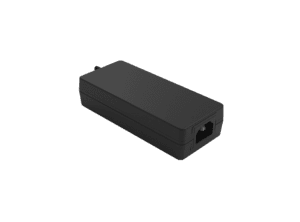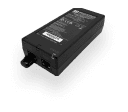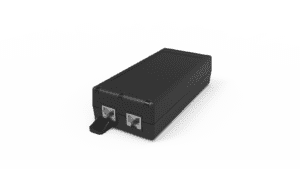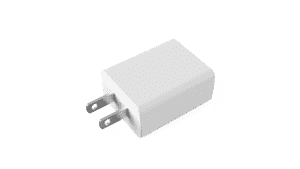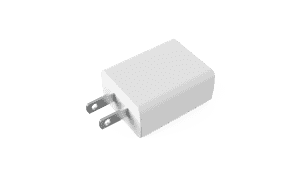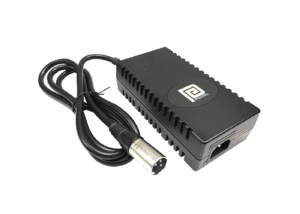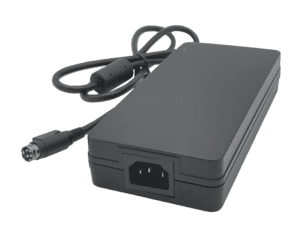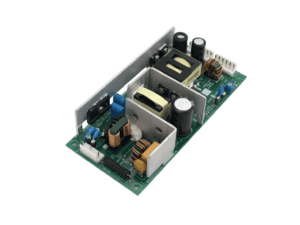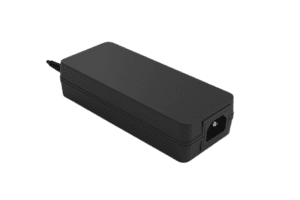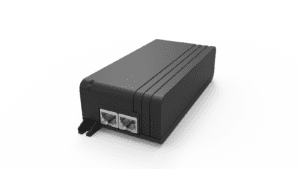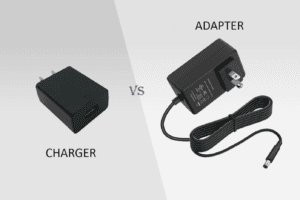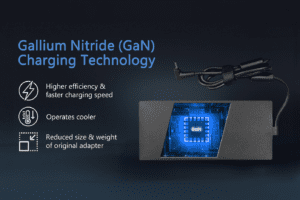BLOG
Smart Power Supply Manufacturing: How to Manufacture Digital Programmable Power Supplies for Industry 4.0 Automation
Table of contents

Why Digital Programmable Power Supplies Are Essential for Industry 4.0 Systems
As factories, warehouses, and industrial processes evolve under the banner of Industry 4.0, traditional power supplies are no longer sufficient. Today’s automated systems demand intelligent, adaptive, and digitally-controlled power solutions—also known as digital programmable power supplies. These systems do more than provide voltage—they communicate, self-regulate, and integrate seamlessly with IoT, PLCs, and industrial networks.
Unlike fixed-output power units, programmable power supplies allow real-time adjustment of voltage, current, and operating parameters via digital interfaces such as I²C, PMBus, or RS485. This enables smarter control, predictive maintenance, and system-level power optimization.
Top Features
- Remote voltage and current programming via software
- Digital feedback and health monitoring through telemetry
- Interface support for industrial protocols (Modbus, PMBus, CAN, etc.)
Top Benefits
- Enables centralized power control across production lines
- Supports condition-based maintenance and system optimization
- Reduces downtime by enabling remote diagnostics and configuration
Best Practices
- Design with robust communication and isolation layers
- Ensure noise immunity for integration in EMI-prone environments
- Validate performance under variable loads and thermal stress
Smart power is no longer optional in Industry 4.0—it’s the standard for flexible, future-ready manufacturing.
How Programmable Power Supplies Improve Automation and Control in Industrial Settings
In modern industrial environments, everything from sensor arrays to robotic arms operates under real-time control systems. Traditional power supplies cannot adapt to changing demands, but programmable power supplies can.
By integrating with factory automation platforms, these power systems enable real-time tuning of output profiles based on workload, timing, or environmental conditions. This allows manufacturers to dynamically allocate energy, improve energy efficiency, and extend equipment life.In contemporary industrial settings driven by Industry 4.0 principles, a vast array of sophisticated equipment, ranging from intricate sensor networks and advanced robotic manipulators to complex automated assembly lines, relies heavily on precise and responsive real-time control systems.
Traditional, static power supplies, with their fixed output characteristics, prove increasingly inadequate in meeting the dynamic and often unpredictable power demands of these advanced operational environments. Unlike their conventional counterparts, digital programmable power supplies offer a paradigm shift in power management by providing the crucial capability to adapt their output parameters in real-time.
Top Features
- Load-following behavior with programmable voltage/current limits
- Real-time telemetry and alarms for voltage sag, overcurrent, and temperature
- Customizable power profiles for batch processes or machine states
Top Benefits
- Reduces energy waste during idle or low-load cycles
- Supports automated reconfiguration during product changeovers
- Increases system responsiveness to process variations
These intelligent power systems achieve their adaptability through seamless integration with overarching factory automation platforms and industrial control networks. This deep integration enables a closed-loop feedback mechanism, allowing for the continuous monitoring of various operational parameters, including workload fluctuations, precise timing sequences, and evolving environmental conditions within the manufacturing facility. Based on the data received from these real-time sensors and control systems, the programmable power supplies can dynamically adjust their voltage, current, and even frequency profiles. This granular level of control empowers manufacturers with unprecedented flexibility in how they allocate and manage electrical energy throughout their operations.
The benefits of this dynamic power management are manifold and contribute significantly to enhanced industrial efficiency and sustainability.
Firstly, manufacturers can optimize energy consumption by precisely matching the power delivered to the instantaneous requirements of their equipment, thereby minimizing energy waste and reducing operational costs.
Secondly, the ability to fine-tune power delivery profiles can contribute to extending the operational lifespan of industrial equipment. By avoiding unnecessary stress caused by power surges or inconsistent supply, these programmable power supplies help to maintain the health and reliability of critical machinery. Furthermore, the adaptability of these power systems facilitates smoother transitions during production changes and allows for more agile responses to evolving manufacturing needs, ultimately enhancing overall productivity and operational resilience in the face of dynamic industrial landscapes.
Best Practices
- Implement closed-loop control systems for automatic adjustments
- Use non-volatile memory for storing power profiles and recovery states
- Choose supplies with redundant outputs for critical loads
Automation depends on adaptability—and programmable power makes systems more responsive and reliable.
What Standards Govern Digital Power Supply Design for Industrial Use?
Any power supply used in industrial environments must meet strict safety, EMI, and immunity standards, particularly when digital control interfaces are involved. For programmable supplies in Industry 4.0, the most relevant standards include:
- IEC 61000‑6‑2: EMC immunity for industrial environments
- IEC 62368‑1 or UL 61010: Safety of electrical and IT equipment
- IEC 61000‑3‑2: Harmonic emissions for power quality compliance
Meeting these standards ensures that your power supply won’t cause or be affected by electrical disturbances—critical in environments filled with motors, relays, RF devices, and control systems.
Top Features
- Built-in EMI filters and shielding
- Surge protection, ESD suppression, and line isolation
- Conformance to CE, UL, FCC, and RoHS standards
Top Benefits
- Ensures safety and uptime in demanding industrial settings
- Simplifies global deployment through universal compliance
- Speeds up system-level certification processes
Best Practices
- Include test points and debug ports for certification labs
Partner with test houses early to avoid costly redesigns - Validate all I/O under worst-case operating conditions
Compliance is not just a checkbox—it’s the foundation for dependable industrial power design.
CLIENT'S QUOTE
"Phihong’s PoE solutions have made a huge difference for us! Our network runs more efficiently, and we’ve seen real cost savings. We couldn’t be happier!"
How to Engineer Multi-Output and Configurable Power Systems for Complex Machinery
Industrial automation often involves multiple devices requiring different voltages and power levels—from 5 V logic to 48 V motors. Instead of deploying several isolated supplies, OEMs increasingly rely on multi-output programmable power systems to simplify wiring, reduce cost, and optimize space.
A configurable supply allows designers to assign voltage and current limits to each output channel. In advanced systems, channels can be sequenced, synchronized, or turned on/off remotely, depending on the production state.
Top Features
- Independent and shared regulation modes
- Sequencing and fault recovery control for multiple loads
- Voltage trimming and margining via software or control pins
Top Benefits
- Reduces rack space, cooling requirements, and wiring complexity
Improves fault isolation and component safety - Enhances system-level power optimization across machine stages
Best Practices
- Design for thermal zoning to separate hot and cold components
Provide user-adjustable profiles through firmware or GUI - Use digital controllers with real-time telemetry for each channel
The more complex the automation, the more valuable a multi-channel smart supply becomes.
How Remote Monitoring and Predictive Maintenance Are Enabled by Digital Power
One of the biggest drivers of Industry 4.0 is predictive maintenance—the ability to anticipate and prevent equipment failures before they occur. Digital programmable power supplies contribute to this by providing real-time telemetry on key parameters like temperature, voltage fluctuation, and usage cycles.
Integrated into SCADA or IIoT platforms, this data can trigger alerts, initiate graceful shutdowns, or notify operators before faults cause downtime. Over time, this information builds a usage profile that informs component life tracking and energy optimization.
Top Features
- Built-in sensors for temperature, current, voltage, and fan speed
- Digital interfaces (I²C, PMBus, UART) for telemetry access
- Data logging and threshold-based alarms
Top Benefits
- Prevents unplanned downtime in critical systems
- Supports predictive analytics and lifecycle planning
- Reduces manual inspection and service costs
Best Practices
- Connect telemetry to centralized dashboards or cloud APIs
- Use AI-driven pattern recognition for fault prediction
- Set intelligent thresholds that reflect usage context, not just fixed values
Power supplies with visibility become an asset—not just a component—in predictive maintenance strategies.
What Role Does Firmware Play in Programmable Power Supply Performance?
In digital programmable power supplies, firmware is the brain. It controls how the supply responds to system requests, manages telemetry, and enforces safety protocols. Poor firmware can result in unstable outputs, slow response to load changes, or even damage during faults.
Robust firmware supports power profile storage, fast fault recovery, user-configurable parameters, and secure remote updates. It also enables adaptive algorithms for real-time control, such as current limiting, voltage trimming, and temperature-based throttling.
Top Features
- Multi-profile memory storage for repeatable configurations
- User-accessible programming interface with GUI or script control
- Secure boot and firmware update support for long-term scalability
Top Benefits
- Enhances user flexibility without hardware changes
- Enables remote servicing and feature expansion over time
- Increases product lifecycle by adapting to evolving system demands
Best Practices
- Provide rollback capability for firmware updates
- Secure communication channels to prevent unauthorized access
- Validate real-time behavior under load transients and command inputs
A smart power supply is only as reliable as the code controlling it—firmware makes or breaks long-term performance.
How Phihong USA Supports Smart Power Supply Manufacturing for Industry 4.0
Phihong USA is a leading manufacturer of digitally programmable power supplies tailored for the evolving demands of Industry 4.0. We help OEMs and industrial system integrators design, prototype, and mass-produce custom power solutions that meet strict performance, compliance, and integration requirements.
Our services include:
- IEC 61000‑6‑2 and CE/FCC compliant programmable power platforms
- Multi-output and high-power density solutions for factory automation
- Smart interfaces including PMBus, CAN, UART, and I²C
- Custom firmware development, telemetry integration, and GUI-based configuration tools
- ISO 9001-certified manufacturing and global logistics support
Whether you’re building robotic systems, smart test equipment, or modular industrial control panels, Phihong provides precision-engineered power solutions that scale with your application.
To learn more or request a free consultation, visit www.phihong.com or email usasales@phihongusa.com.

Contact Our Team Today!
Our dedicated sales team and international partners are prepared to support you with your latest projects and initiatives globally.
Explore More with Phihong USA
As we conclude our exploration of PoE technology, it’s evident how these innovations are streamlining power and data integration across various industries. Phihong USA stands at the forefront of this technological advancement, offering a diverse range of power solutions designed to meet the evolving needs of modern industries.
Phihong USA’s extensive product lineup includes:
- Power over Ethernet (PoE) Solutions: Delivering reliable power and data transmission over a single cable, ideal for simplifying network installations and reducing costs.
- AC/DC Adapters and Power Supplies: From compact adapters to industrial-grade power supplies, Phihong provides solutions that ensure efficiency and reliability in various applications.
- Battery Chargers: Customizable chargers for lithium-ion and lead-acid batteries, supporting a wide range of power requirements for mobility and industrial applications.
- Medical Power Supplies: Specialized power solutions designed to meet the stringent requirements of the healthcare industry, ensuring safety and reliability.
Phihong USA is committed to innovation and excellence, continually developing products that meet the highest standards of performance and reliability. Their global reach and dedication to customer support make them a trusted partner in powering the future.
Here are some useful links to explore Phihong USA’s offerings further and bring in new potential clients:
Visit Phihong USA to discover how their advanced power solutions can support your business needs. Whether you’re looking to upgrade your network, or find reliable power supplies, Phihong USA has you covered.
By choosing Phihong USA, you’re partnering with a leader in power technology, ensuring your operations run smoothly and efficiently with top-tier power solutions. Contact Us today!
FAQ
What is a digital programmable power supply?
A digital programmable power supply is a power source that allows users or systems to remotely control output voltage and current, often through digital communication protocols like I²C, PMBus, or RS485. Unlike fixed-output supplies, programmable models can adapt in real time based on system needs, making them ideal for automated and data-driven environments.
These supplies offer telemetry, alarm thresholds, and often integrate into larger factory systems via SCADA or cloud platforms. For Industry 4.0, they serve as intelligent power hubs that optimize energy use, enhance reliability, and reduce manual reconfiguration.
Digital Programmable Power Supplies in Industry 4.0
Digital programmable power supplies represent a significant advancement in power management, offering dynamic control over output voltage and current. This adaptability is achieved through integration with digital communication protocols such as I²C, PMBus, and RS485, enabling seamless remote control and monitoring by users or automated systems. In stark contrast to traditional fixed-output power supplies, these intelligent units can dynamically adjust their output parameters in response to real-time system requirements, making them indispensable for the sophisticated and interconnected environments characteristic of Industry 4.0.
Beyond basic voltage and current control, digital programmable power supplies offer a wealth of advanced functionalities. They typically provide comprehensive telemetry data, including real-time measurements of voltage, current, power, and temperature, allowing for detailed system monitoring and analysis.
Furthermore, users can configure alarm thresholds for various parameters, enabling proactive identification and mitigation of potential issues. A key advantage in the context of advanced manufacturing is their ability to integrate seamlessly into larger industrial ecosystems through protocols compatible with Supervisory Control and Data Acquisition (SCADA) systems and cloud platforms. This integration transforms them into intelligent power hubs within the factory infrastructure.
In the framework of Industry 4.0, digital programmable power supplies play a crucial role in optimizing energy consumption. Their ability to precisely regulate power delivery based on actual demand minimizes energy waste and contributes to more sustainable operations.
Moreover, their advanced monitoring and control capabilities enhance system reliability by enabling early detection of anomalies and facilitating preventative maintenance. The remote programmability of these supplies significantly reduces the need for manual intervention and reconfiguration, streamlining operational processes and improving overall efficiency. By providing granular control and comprehensive data insights, digital programmable power supplies empower manufacturers to build more flexible, efficient, and resilient production systems aligned with the core principles of Industry 4.0.
Why are programmable power supplies important for Industry 4.0 automation?
Programmable power supplies support the core principles of Industry 4.0: automation, flexibility, connectivity, and data-driven control. They allow equipment to adapt on-the-fly to changing loads, job types, or production schedules. In smart factories, this reduces downtime, improves energy efficiency, and supports remote control—all essential for connected, responsive manufacturing environments.
The Pivotal Role of Programmable Power Supplies in Industry 4.0 Automation
Programmable power supplies are not merely components within Industry 4.0 automation systems; they are foundational elements that directly enable and enhance the core tenets of this technological revolution. Automation, a central pillar of Industry 4.0, relies heavily on the ability of machinery and equipment to operate autonomously and with minimal human intervention. Programmable power supplies contribute to this by providing a precisely controlled and adaptable power source that can be dynamically adjusted based on the real-time needs of automated processes. This eliminates the need for manual adjustments, streamlining operations and reducing the potential for human error in complex automated workflows.
Flexibility, another crucial aspect of Industry 4.0, demands that manufacturing systems can readily adapt to changing production requirements, whether it’s a shift in product design, variations in batch sizes, or entirely new production lines. Programmable power supplies are instrumental in achieving this flexibility. Their ability to be reconfigured electronically, often through software commands, allows them to cater to a wide range of voltage and current demands. This adaptability minimizes the need for dedicated, single-purpose power supplies, leading to reduced equipment costs and a more agile manufacturing infrastructure capable of responding swiftly to market demands and customized product specifications.
Connectivity, the seamless integration of all elements within a smart factory, is significantly enhanced by programmable power supplies. Many modern programmable power supplies are equipped with digital interfaces, such as Ethernet, USB, or GPIB, enabling them to communicate with other devices and control systems within the network. This connectivity allows for remote monitoring of power delivery parameters, real-time adjustments based on sensor data or higher-level control commands, and the integration of power supply data into broader factory analytics platforms. This interconnectedness provides valuable insights into energy consumption, system performance, and potential maintenance needs, contributing to a more transparent and efficient operation.
Data-driven control, the intelligent decision-making based on the vast amounts of data generated within Industry 4.0 environments, is directly supported by the capabilities of programmable power supplies. The ability to precisely control and monitor power output, coupled with the connectivity to transmit this data, provides a rich source of information for analysis. This data can be used to optimize energy usage, detect anomalies that might indicate equipment malfunctions, and fine-tune processes for maximum efficiency and quality. By providing granular control and detailed data on power delivery, programmable power supplies empower manufacturers to make informed decisions that drive continuous improvement in their smart factories.
In the context of smart factories, the advantages offered by programmable power supplies translate into tangible benefits. Reduced downtime is achieved through their ability to adapt to changing conditions without requiring manual intervention, and through their potential to provide diagnostic data that can help predict and prevent failures. Improved energy efficiency is realized through precise power delivery tailored to the specific needs of the equipment, minimizing energy waste. Furthermore, the capability for remote control enables engineers and technicians to monitor and adjust power parameters from anywhere within the connected network, facilitating rapid response to issues and optimizing performance without the need for on-site presence. All of these factors are essential for creating connected, responsive manufacturing environments that are agile, efficient, and capable of meeting the demands of the modern industrial landscape.
What communication protocols do smart power supplies typically support?
Most digital power supplies support at least one of the following:
- PMBus (Power Management Bus)
- I²C / SMBus for board-level integration
- RS485 or CAN for industrial communication
- Modbus TCP for SCADA and PLC integration
These interfaces enable system-wide power orchestration, telemetry logging, and command-driven adjustments.Digital programmable power supplies frequently incorporate standardized communication interfaces to facilitate comprehensive system management. These interfaces allow for real-time monitoring, control, and data acquisition, which are crucial for modern industrial and embedded applications.
PMBus (Power Management Bus): PMBus is an open-standard power management protocol built upon the SMBus (System Management Bus). It provides a flexible and standardized way to communicate with power converters and other power-related devices. Key functionalities include setting output voltage and current, monitoring input and output parameters (voltage, current, temperature), reporting faults and warnings, and controlling sequencing and margining. PMBus is widely adopted in various applications, including data centers, telecommunications equipment, and high-performance computing. Its standardized command set ensures interoperability between different vendors’ devices, simplifying system integration and management.
I²C / SMBus for board-level integration: I²C (Inter-Integrated Circuit) and its derivative SMBus are serial communication protocols commonly used for low-speed communication between integrated circuits on a printed circuit board. In the context of power supplies, these interfaces enable communication with supervisory circuits, microcontrollers, and other board-level components. They can be used for basic monitoring functions, enabling/disabling the power supply, or adjusting output parameters in tightly integrated systems. Their simplicity and low pin count make them ideal for space-constrained applications.
RS485 or CAN for industrial communication: For industrial environments where robust and long-distance communication is required, RS485 and CAN (Controller Area Network) are frequently employed. RS485 is a serial communication standard that allows for multi-drop networks, enabling communication with multiple devices over a shared bus. CAN is a message-based protocol designed for high reliability and real-time control, commonly used in automotive and industrial automation. When integrated into power supplies, these interfaces allow for seamless communication with industrial control systems, enabling centralized monitoring, control, and diagnostics across the entire facility.
Modbus TCP for SCADA and PLC integration: Modbus TCP is an Ethernet-based version of the widely used Modbus serial communication protocol. It is a standard protocol for connecting industrial automation devices such as Programmable Logic Controllers (PLCs) and Supervisory Control and Data Acquisition (SCADA) systems. Integrating Modbus TCP into digital power supplies allows for easy integration into existing industrial networks, enabling operators to monitor and control power delivery as part of the overall automation system. This facilitates remote diagnostics, data logging for trend analysis, and coordinated control of various industrial processes.
Collectively, these interfaces empower sophisticated power management strategies at both the device and system levels. They enable proactive maintenance through telemetry logging, facilitate dynamic adjustments based on system demands through command-driven control, and ensure reliable and efficient power delivery across diverse applications. The choice of interface often depends on the specific requirements of the application, including communication distance, data rate, robustness, and integration with existing infrastructure.
How do I certify my programmable power supply for global use?
You’ll need to meet electrical safety (UL, IEC), EMC (IEC 61000 series), and efficiency (DOE Level VI or EU CoC) standards. Testing for IEC 61000‑6‑2 is especially critical in industrial settings. Pre-certified modules from Phihong can dramatically speed up your compliance process.Manufacturing smart power supplies for Industry 4.0 demands rigorous adherence to a suite of international standards encompassing electrical safety, electromagnetic compatibility (EMC), and energy efficiency. Key electrical safety certifications include UL standards for the United States and IEC standards for international markets, ensuring the product’s safe operation and minimizing potential hazards.
Regarding EMC, compliance with the IEC 61000 series is essential to guarantee that the power supply neither interferes with other electronic equipment nor is susceptible to electromagnetic disturbances in its operating environment. Specifically, testing for IEC 61000-6-2, which addresses EMC immunity for industrial environments, is of paramount importance for power supplies intended for Industry 4.0 applications characterized by potentially noisy electrical conditions. Furthermore, meeting stringent energy efficiency regulations such as the US Department of Energy (DOE) Level VI or the European Union’s Code of Conduct (EU CoC) is crucial for minimizing energy consumption and environmental impact. Navigating this complex landscape of certifications can be a time-consuming and resource-intensive process. However, utilizing pre-certified power modules from reputable manufacturers like Phihong can offer a significant advantage by streamlining the compliance journey.
These pre-certified modules have already undergone the necessary testing and validation, potentially reducing development time, lowering compliance costs, and accelerating the time-to-market for your smart power supply products. Integrating such modules allows manufacturers to focus more on the core functionalities and intelligent features of their power supplies, ultimately contributing to the advancement of Industry 4.0.
Can programmable power supplies help with predictive maintenance?
Yes. With built-in telemetry and data logging, these supplies provide insight into load cycles, temperature trends, voltage drift, and other patterns. This data can be used to predict failures, schedule maintenance, and reduce unplanned downtime—making them a powerful tool in predictive maintenance strategies.

